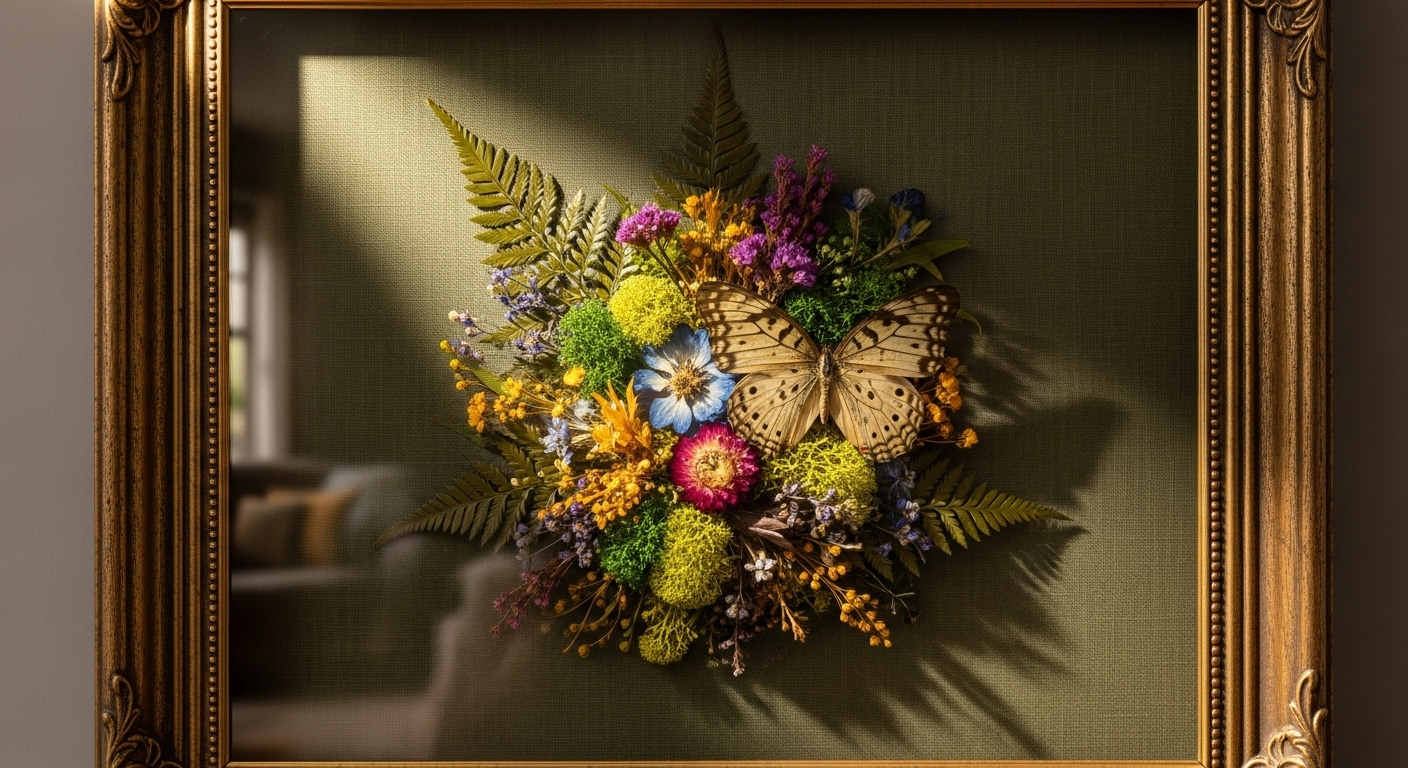Botanical Taxidermy: Preserving Nature's Beauty in Home Decor
Imagine stepping into a living room where delicate butterfly wings shimmer under glass, preserved flowers cascade from vintage frames, and a meticulously arranged tableau of mosses and lichens brings the forest floor to life. This isn't a natural history museum—it's the latest trend in home decor: botanical taxidermy. Blending the Victorian fascination with nature preservation and contemporary design sensibilities, this innovative approach to bringing the outdoors in is captivating homeowners and interior designers alike.

The Roots of Botanical Preservation
The practice of preserving botanical specimens has a rich history dating back centuries. Renaissance-era explorers and naturalists began collecting and pressing plants during their expeditions, creating the first herbaria—collections of dried plant specimens used for scientific study. This tradition evolved into the Victorian-era fascination with nature collection and display, popularizing the creation of intricate butterfly boxes and flower presses.
In the 19th century, pteridomania—or fern fever—swept through Europe and North America, with enthusiasts collecting and cultivating ferns for display in elaborate Wardian cases. This period also saw the rise of taxidermy as a popular form of home decor, with mounted animals and birds adorning the walls of wealthy households.
Modern Revival and Artistic Evolution
Today’s botanical taxidermy movement draws inspiration from these historical practices while incorporating contemporary aesthetics and sustainable principles. Modern practitioners emphasize ethical sourcing, often using plants and insects that have died naturally or been sustainably harvested. This renewed interest in botanical preservation coincides with a growing desire to reconnect with nature in our increasingly urbanized world.
Artists and designers are pushing the boundaries of traditional preservation techniques, creating stunning works that blur the line between science and art. From resin-encased flower arrangements to large-scale insect installations, botanical taxidermy is finding its way into galleries, high-end boutiques, and homes around the world.
Techniques and Materials in Botanical Taxidermy
The world of botanical taxidermy encompasses a wide range of techniques and materials, each offering unique possibilities for preserving and displaying natural specimens. Here are some of the most popular methods:
Pressing and Framing: This classic technique involves carefully flattening and drying flowers, leaves, and other plant materials, then arranging them in artistic compositions within frames. Modern practitioners often use microwave presses for quicker results.
Resin Casting: Plants, insects, and other small specimens are encased in clear resin, creating three-dimensional pieces that showcase the subject from all angles. This technique is particularly popular for jewelry and small decorative objects.
Insect Mounting: Ethically sourced insects are carefully pinned and arranged in shadowboxes or under glass domes, creating stunning displays of natural diversity and color.
Terrarium Taxidermy: This technique combines living plants with preserved specimens, creating miniature ecosystems that blend life and art.
Skeletal Leaf Art: By carefully removing the flesh of leaves, artists create delicate, lace-like structures that highlight the intricate vein patterns of different plant species.
Incorporating Botanical Taxidermy into Home Decor
As botanical taxidermy gains popularity, homeowners and interior designers are finding creative ways to incorporate these natural artworks into various decor styles. Here are some inspiring ideas:
Focal Wall Features: Large-scale pressed flower arrangements or insect displays can serve as stunning alternatives to traditional wall art, bringing a touch of nature to minimalist or contemporary interiors.
Coffee Table Curiosities: Glass-topped coffee tables filled with artfully arranged botanical specimens create conversation pieces that blend form and function.
Bookshelf Accents: Small resin-cast botanical pieces or insect shadowboxes can add visual interest to bookshelves, breaking up rows of books with natural textures and colors.
Bathroom Oasis: Preserved moss walls or framed fern specimens can transform a bathroom into a serene, spa-like retreat, especially in spaces with limited natural light.
Kitchen Herbarium: Pressed and framed herb specimens not only add visual interest to kitchen walls but also serve as botanical reference guides for cooking enthusiasts.
The Environmental and Ethical Considerations
While botanical taxidermy offers a sustainable alternative to cut flowers and mass-produced decor, it’s essential to consider the ethical implications of this trend. Responsible practitioners emphasize the importance of sourcing specimens ethically, avoiding rare or endangered species, and respecting local regulations regarding plant and insect collection.
Many artists focus on using invasive plant species or insects considered pests, turning potential environmental problems into beautiful art. Others collaborate with botanical gardens and conservation organizations to ethically source specimens, ensuring that their work contributes to broader environmental education and preservation efforts.
DIY Botanical Taxidermy: Getting Started
For those inspired to try their hand at botanical taxidermy, starting with simple pressing and framing techniques can be a rewarding entry point. Begin by collecting fallen leaves, flowers from your garden, or ethically sourced insects. Invest in a good plant press or create your own using heavy books and absorbent paper.
Experiment with different arrangements and compositions before committing to a final design. Consider taking a workshop or online course to learn more advanced techniques like resin casting or insect pinning. Remember to always prioritize ethical sourcing and preservation methods in your projects.
The Future of Botanical Taxidermy in Home Design
As our connection to the natural world becomes increasingly tenuous, botanical taxidermy offers a tangible way to bring nature into our daily lives. This trend is likely to evolve, incorporating new preservation techniques and materials that further blur the line between art and science.
We may see a rise in interactive botanical displays that combine preserved specimens with augmented reality technology, allowing viewers to learn about the natural history of each piece. Additionally, the principles of botanical taxidermy could inspire new forms of sustainable architecture and interior design, with buildings integrating preserved natural elements into their very structure.
Botanical taxidermy represents more than just a passing trend in home decor. It’s a testament to our enduring fascination with the natural world and our desire to capture and preserve its fleeting beauty. As we continue to navigate the complexities of our relationship with nature, these artful preservation techniques offer a poignant reminder of the delicate balance between human creativity and the wonders of the natural world.





